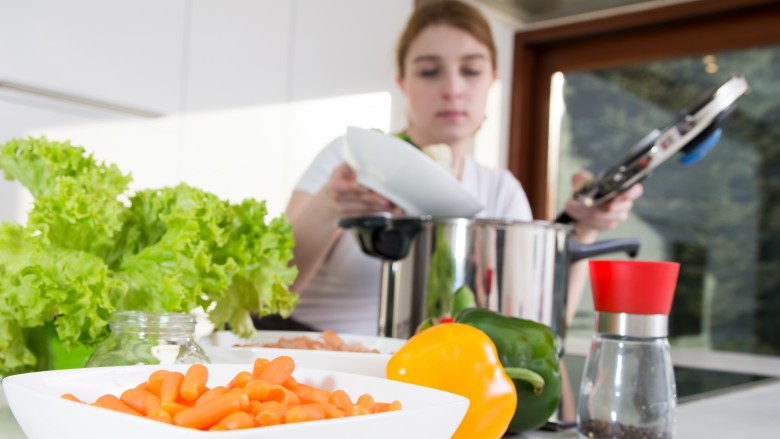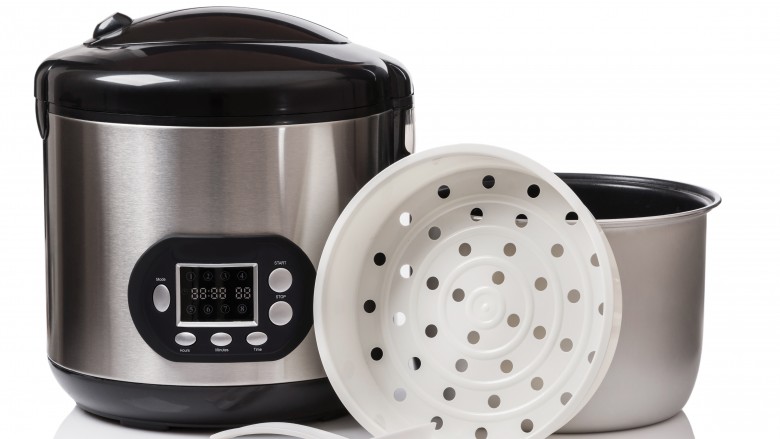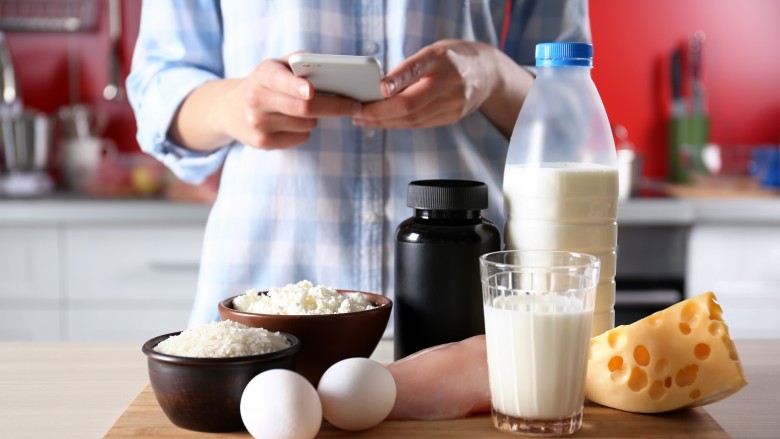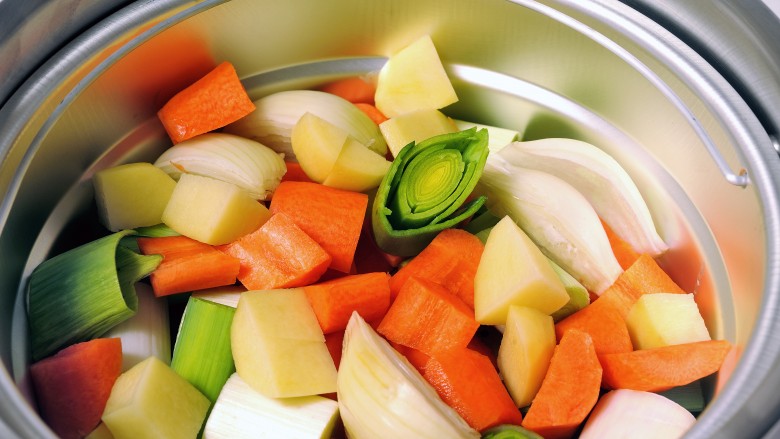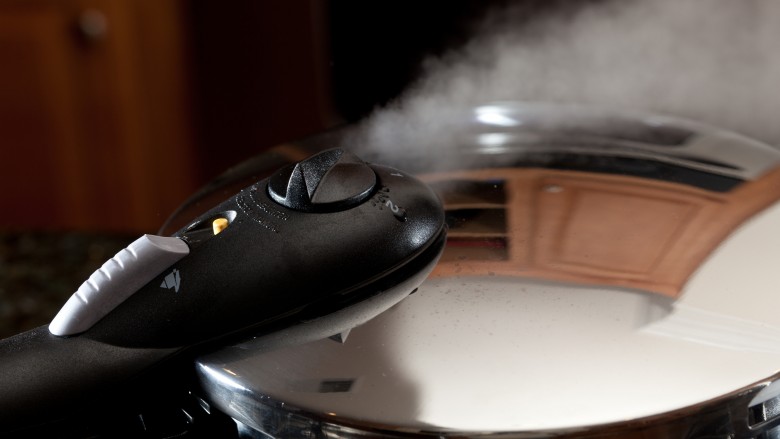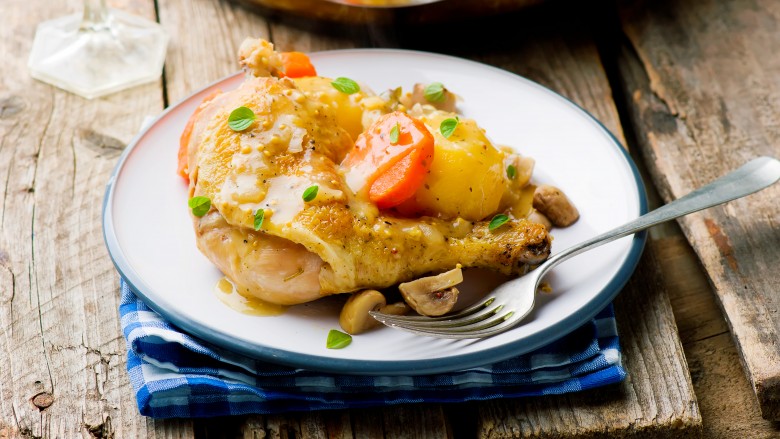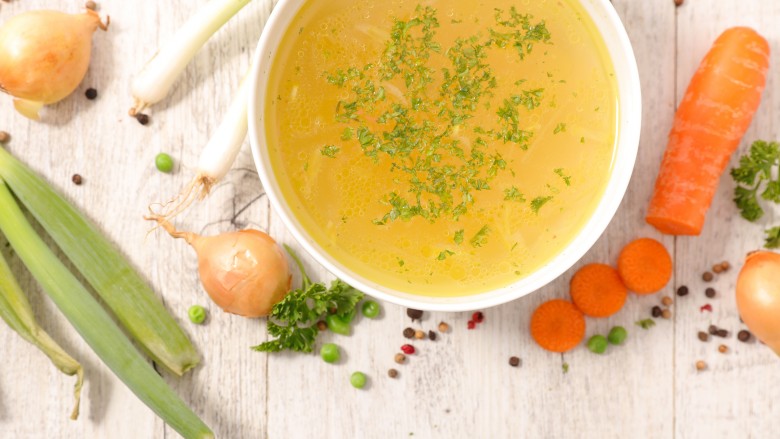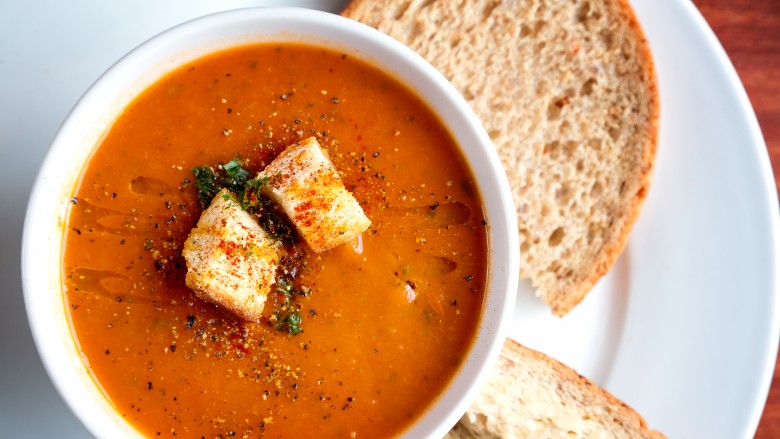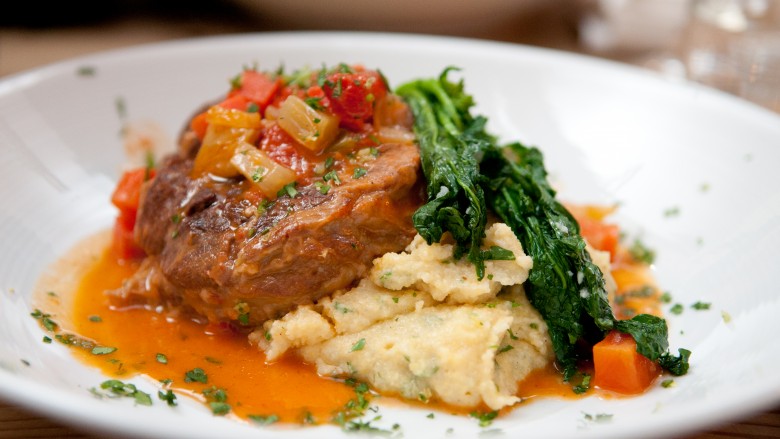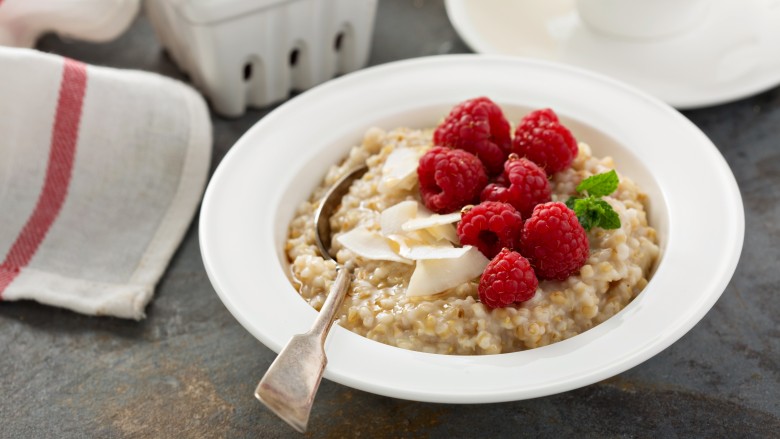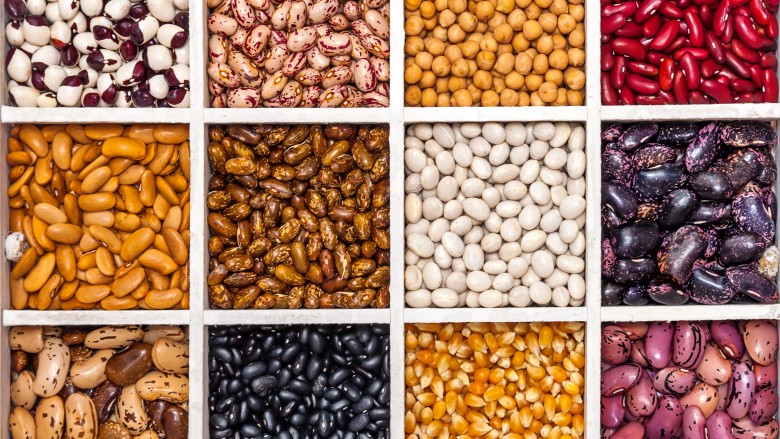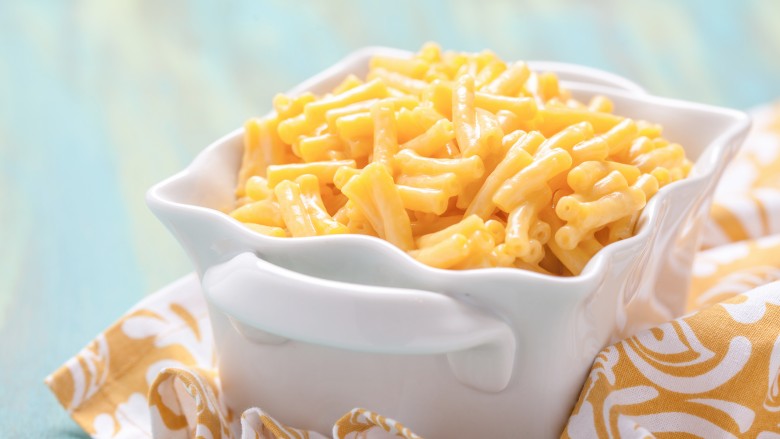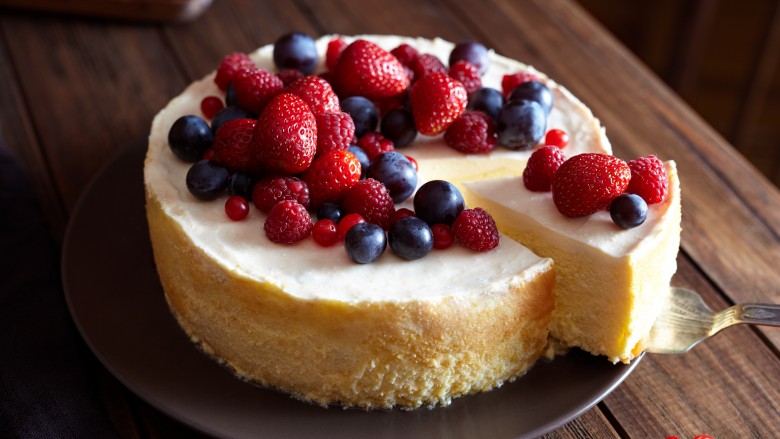Everything You Need To Know About Pressure Cookers
There's a lot of buzz about pressure cooking lately, the cooking method that can shave off anywhere from several minutes to multiple hours from meal prep. Pressure cooking was once the epitome of homespun cooking. Early renditions of home pressure cookers were quite complicated, but became more user-friendly as time passed. Still, once microwaves became mainstream, pressure cookers fell out of favor with home cooks. The current excitement about pressure cookers comes from professional chefs applying this old school technique to create modern cuisine, and home cooks who are thrilled about the latest electric, programmable pressure cookers that make weeknight dinner preparations simple and worry-free. Here's a deeper look at what the pressure cooker can do and delicious things to make with it.
What's going on inside a pressure cooker?
Without having to earn a degree in physics, you can understand what is happening inside a pressure cooker to make your food just as delicious (if not more so) as slower methods. By locking food into the airtight pot with just the right amount of liquid and heating the contents until the trapped steam builds up pressure, the boiling point of the liquid is raised. That higher temperature cooks the ingredients faster than if the steam had been allowed to escape.
A valve on the pot allows only enough steam out to prevent the buildup of too much pressure — the moisture inside is also forced into ingredients, like tough meat cuts, for fall-off-the-bone tender dishes in a fraction of the time it would take to break down those proteins via oven braising or slow roasting. Steaming isn't usually thought of as a way to boldly bolster flavor, but with pressurized steam at play, the flavors become very intense and even brown and caramelize the food too. After food is done, the steam is carefully released until the pressure is normalized and it's safe to open the pot.
Pick your pressure cooker
There are two main types of pressure cookers: electric and stovetop. Electric pressure cookers automatically control heat and pressure, making the process almost completely hands-off. The control pads are user friendly and often fool-proof. Many electric pressure cookers include value-added functions like programmable start times and warming settings, and they often come equipped to carry out other cooking functions like slow cooking and steaming rice.
A good stove top pressure cooker will be made of stainless steel and have a thick bottom that helps evenly distribute the heat so the pressure properly builds. Stove top pressure cookers get hotter and build up more pressure than electric cookers, which allows for shorter cooking times and better caramelization, but the heat source for these pots is external, and it's necessary to manually adjust and monitor the heat to maintain pressure levels during cooking.
Getting started with pressure cooking
If you're a pressure cooking novice, stick with proven recipes until you get the swing of things. Getting ratios and cooking settings right will take a little time and practice — using a guide will help avoid mistakes and wasted ingredients. Don't worry, though, the basic steps for pressure cooking are relatively simple.
First, you'll prepare the ingredients. General prep like cutting and trimming ingredients, sweating onions or other vegetables to softening them, browning ground meat or searing a crust onto a roast fall into this category. The beauty of pressure cookers is that much of this prep can take place right in the pot. Next, you'll place everything in the pot with at least one cup of liquid. Then, with the lid securely closed, heat to the desired pressure to cook. After cooking, release the steam according to the recipe instructions. Check out this compilation of recipes from Serious Eats to get started.
Fill 'er up—partly
Pot capacity and what you're cooking will dictate how much food and liquid you can prepare in one pressure cooking batch. It's important to follow the guidelines and make certain you don't overfill the pressure cooker. Refer to information provided in your recipe, but as a general rule you'll usually be instructed to fill the pressure cooker two-thirds full or less. Beans, rice and other grains kick up a lot of starchy foam that can really bubble up, so you'll usually limit the pot capacity to half full in order to safely cook those types of ingredients. Don't be tempted to cram in a little extra, the pressure release valve might become blocked causing it to malfunction—and that can actually be dangerous or damaging to the pressure cooker. Work in batches if you have a tall order to cook. The speed the pressure cooker delivers will make doing so innocuous.
Releasing the pressure
Familiarize yourself with how your pot is depressurized. There are two main types of steam release: natural and rapid. Recipes will indicate the type of release needed. The pressure drops slowly in a natural release as the pot cools down, which usually takes about 10 to 30 minutes. This method is commonly used for soups, stocks and beans.
Rapid release works differently depending on the type of pressure cooker you're using and often requires that you press a valve button or lift a lever to let out the steam in a quick one to two minute blast. Use this method when you need to add ingredients part way through cooking or when foods like delicate vegetables or hard-cooked eggs need to quickly get off the heat. Take care with quick releases the burst of steam is extremely hot and can cause burns.
Got frozen chicken? Pressure cook it.
How many times have you realized, way too late, that you forgot to take that chicken you had planned for dinner out of the freezer? Whelp, there goes that plan and now you're on the phone to order pizza. Hold on! If you've got a pressure cooker, you can actually put that frozen meat straight into the pot and have dinner ready in 20 minutes. You could certainly just use water or chicken broth as the liquid in the pot, but this recipe has some inspiring sauce suggestions that will infuse chicken with zesty flavors while it cooks. Stir-together combinations like Jamaican jerk sauce made from five pantry ingredients and honey and whole grain Dijon mustard sauce might have you "forgetting" to defrost the chicken more often.
You can also cook a whole frozen chicken in the pressure cooker. It won't come out looking like a centerpiece roast bird, but the trade-off of going from frozen to finished in about 45 minutes will let you put aesthetics aside. No one will notice anyway if you cut up the chicken and plate it rather than present it whole to the dinner table. Don't stop at chicken: you can cook other meats from frozen in the pressure cooker too.
Make the quickest stock ever
Chicken, beef, turkey, vegetable and most any other type of stock comes together in the pressure cooker the same way it does when you cook it on the stove. You are, however, going to have to find something else to do with the extra two or three hours this 30 minute, quick-fire method frees up. That's time you would have otherwise spent skimming the top of the pot and adjusting the heat source to maintain a simmer. For more flavor intensity, you can opt to do a natural pressure release rather than a rapid one. It will add another half hour, but even with that extra time you still come out at least two hours ahead.
If you're using an electric pressure cooker, you can get even more freedom by programming the cooker to kick on whenever you wish and switch over to warm when the stock is ready. You can head off to work, do some shopping, or sneak in a nap—no one has to know you didn't slave over the steaming pot for half the day. For pressure cooker chicken stock, just place the chicken pieces and aromatic vegetables (carrots, celery, and onion) into the pot and add water. Pressure cooking expert Lorna Sass suggests bringing the water to a boil before adding it to the pot to make the process even faster for her turkey stock recipe.
Soup's on
Just as easily and quickly as broth is made in the pressure cooker, so are soups. Any soup is game. Try this Zucchini Basil Soup: Sauté the onions and garlic in the pot with some oil before sealing in the zucchini, seasoning and water — it'll be ready to eat in 20 minutes. This beef and vegetable soup takes a little more effort (but not that much), so give it a spin in the pressure cooker too. And the only thing quicker than making this rendition of Nordstrom's famous tomato soup, is ordering it at their store cafe. After sautéing the carrots and onions, everything else (except the cream which is stirred at the end) goes into the pot to cook. Now you'll have to think of another reason you just had to go to the mall.
Praise for the braise
Braising is one of the best cooking methods for bringing slow-cooked depth and tenderness to tough cuts of meat like short ribs, brisket, pot roast and more. Braising also does equally well softening hard, hearty vegetables like squash, Brussels sprouts, and carrots. If you begin by browning the ingredients first, you can develop deeper, caramelized flavor and give the braising liquid more heft. Reduce the braising liquid after the meat or vegetables are finished and the flavors will further intensify and thicken into a sauce. In a slow cooker, oven or on the stove, a big pieces of a hearty vegetable like a butternut squash will take you close to an hour to braise, but in the pressure cooker that time is reduced by half.
For meat dishes, what can be a two to three hour process becomes a meal you can put together 45 minutes before dinner. This recipe for pot roast will fool everyone into thinking you put in some serious time to prepare a traditional Sunday dinner while you know you actually whipped it up in a flash. These lamb shanks and this recipe for Korean short ribs probably would be reserved for special occasions because they take so much time. The pressure cooker changes all that: these rich, comforting meals can be had on a whim. Be sure to employ the trick of broiling the meat after it comes out of the pot to get a crusty browned finish.
Oats and rice won't disappoint
Steel cut oats and arborio rice share a similar personality. They both take a little time to cook, about 30 minutes on the stove. In the case of the rice, there's also a babysitting requirement because you must stir the grain continually. You can do either of these grains in the slow cooker, and that does make it a hands-free task, but they still will take a while to cook. In the pressure cooker you gain both a hands-free cooking operation and, in case you haven't caught onto the theme yet, a payoff of a short cooking time.
In this asparagus risotto, you'll need to stop the cooking and add the asparagus, butter, and cheese after the rice is almost fully cooked and the pot is unsealed. The tender vegetables will cook quickly and just in time for the rice to reach perfect al dente texture. Here's a recipe for making a quick batch of steel cut oats. The hearty and chewy whole oats can really stand up to high pressured cooking. These oats are made in individual jars which is a great way to set up breakfast for busy weekday mornings.
Cook dried beans in minutes
The best thing about cooking dried beans using a pressure cooker is that you don't even have to soak them before cooking. Soaking adds anywhere from one to 12 hours, and it's often why people opt for the canned option over cooking a batch of their own from scratch. The thing is, the difference in taste is remarkable. You can still pre-soak beans — and to be truthful they'll look prettier if you do. Pre-soaked beans hold together better during cooking, but if you're making a pureed white bean soup for instance, what the beans look like hardly matters — what does matter is the cooking time.
Beans come in all sizes and densities and cooking times will vary. Keep in mind that you can't "uncook" beans, so stop the cooking sooner rather than later. If the beans need more time, you can reseal the pot and bring them up to pressure to cook for a few more minutes. Laura D.A. Pazzaglia, author of Hip Pressure Cooking, offers a guide on her blog outlining the pressure cooking times for beans on her blog. Dried beans are easier on your budget too, so with a pressure cooker, you'll probably make them all the time. Get started with this dish for Brazilian-style black beans and rice.
Skip the box and make this mac and cheese
Make a one-pot mac and cheese with a lusciously creamy cheese sauce and have it ready in about six minutes. You'll cook the pasta in the pressure cooker with butter and salt first, and without draining the elbows once they're cooked. Evaporated milk, and egg and cheese become the sauce that coat this homey dish. Try this rich version of macaroni and cheese with chorizo. It combines pasta, Parmesan, cheddar, and cream cheese along with the spicy sausage.
Yep, you can make cheesecake
It seems impossible that a pot that cooks at high heat in a wet environment would be a great place to make creamy, smooth cheesecake, but it is. This is a dessert that usually has "slow" written all over it. By conventional method, you mix it up slowly and gently and cook it in a low temperature oven, sometimes surrounded by a water bath to make sure the batter doesn't overheat while it bakes.
You still use all those same techniques to prepare it in the pressure cooker and you still get a cheesecake that's just as creamy — but ready in half the time. Try this recipe for a classic cheesecake or this decadent recipe for salted caramel cheesecake. Be sure to wrap the bottom of the springform pan with foil to prevent water seepage into the crust and make a foil "sling" so you can use it as a handle to lift the cheesecake from the pressure cooker without any trouble once it's cooked..

